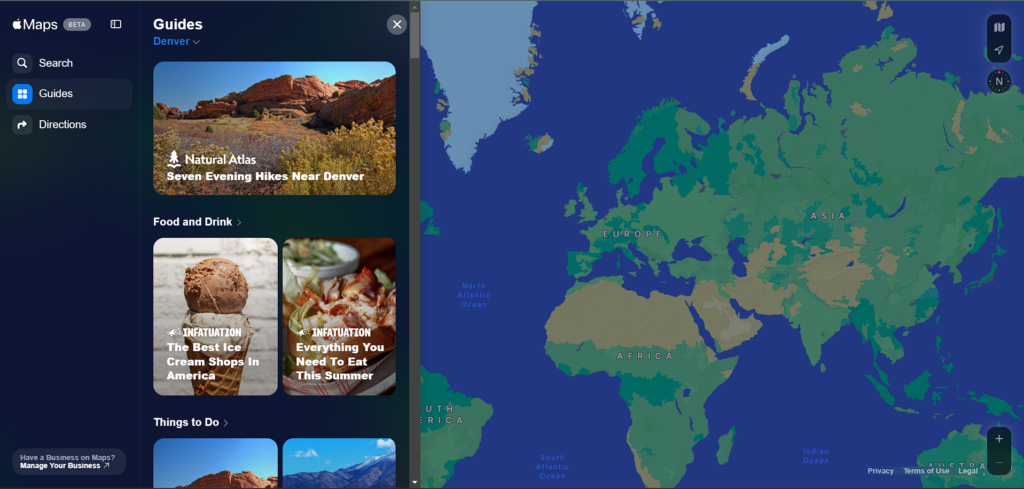In a significant move, Apple has launched Apple Maps on the web in public beta, marking a major expansion of its navigation service beyond native apps. This development brings Apple Maps to a broader audience, offering a seamless experience across devices and platforms.
A Familiar yet Enhanced Experience
The web version of Apple Maps retains the sleek design and user-friendly interface that users have come to expect from the native app. With the added convenience of web accessibility, users can now access Maps directly from their browser, eliminating the need to switch between devices or apps.
Key Features and Functionality
Apple Maps on the web boasts an impressive array of features, including:
- Directions and Routing: Users can get driving and walking directions, complete with estimated times and turn-by-turn guidance.
- Search and Discovery: The web version allows users to search for places, browse curated Guides, and access useful information like photos, hours, ratings, and reviews.
- Actions and Integrations: Users can take actions like ordering food directly from the Maps place card, streamlining their experience.

Compatibility and Language Support
At launch, Apple Maps on the web is compatible with Safari and Chrome on Mac and iPad, as well as Chrome and Edge on Windows PCs. Initially, the service is available in English, with support for additional languages expected in the coming months.
A Boost for Developers
The web version of Apple Maps also offers benefits for developers, who can link out to Apple Maps, enabling their users to access driving d
rections, detailed place information, and more. This integration is made possible through MapKit JS, Apple’s web-based mapping framework.
Read more: Apple’s WWDC 2024: Unveiling iOS 18, macOS 15, and More!
Future Developments and Enhancements
Apple has announced plans to introduce additional features to the web version of Apple Maps, including Look Around, in the coming months. This will further enhance the user experience, providing a more immersive and interactive way to explore destinations.
Conclusion
The launch of Apple Maps on the web marks a significant milestone in the evolution of Apple’s navigation service. By expanding its reach and functionality, Apple is poised to challenge established players in the mapping space. As the service continues to evolve, users can expect a more seamless, intuitive, and powerful navigation experience across devices and platforms.



